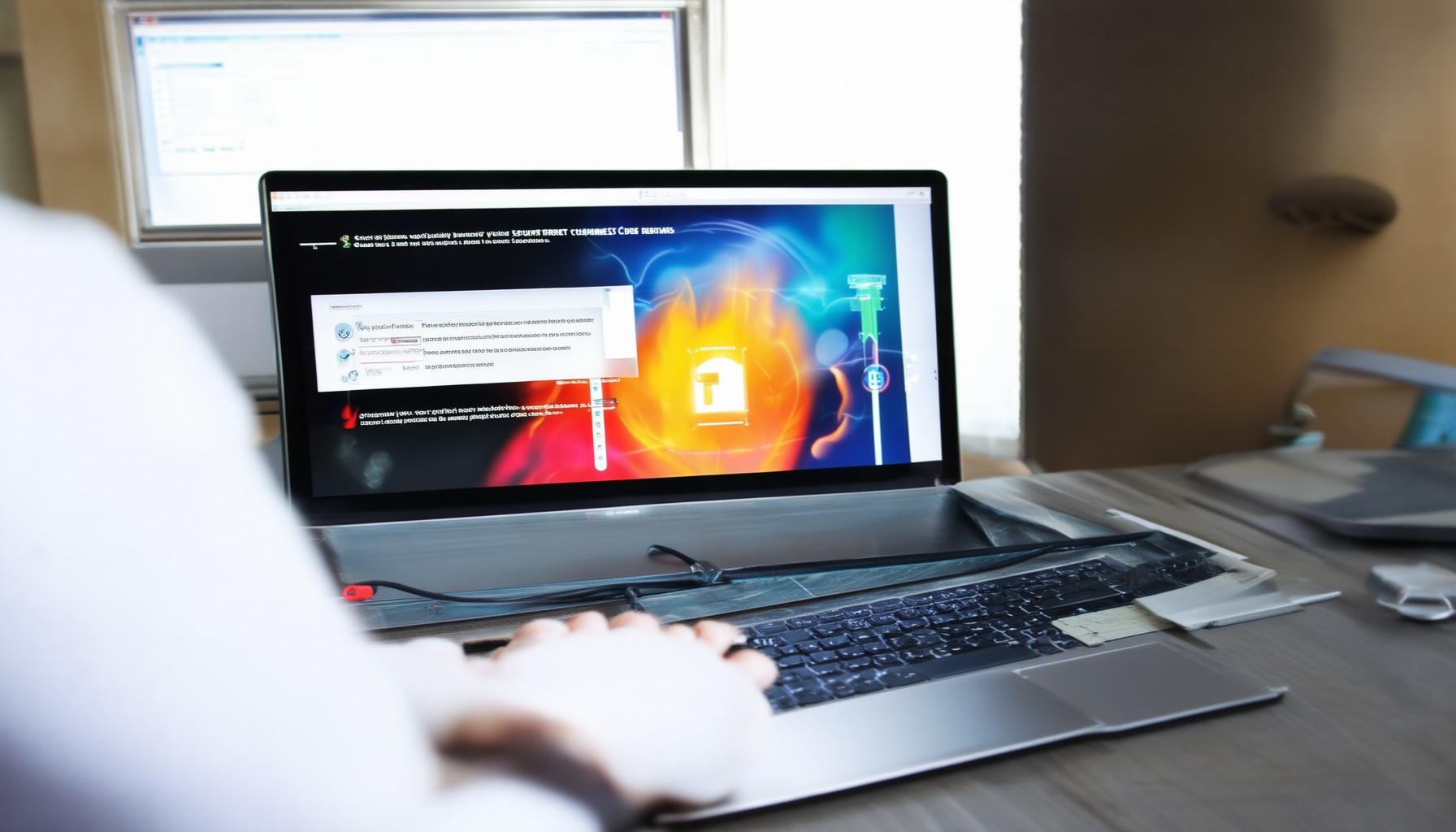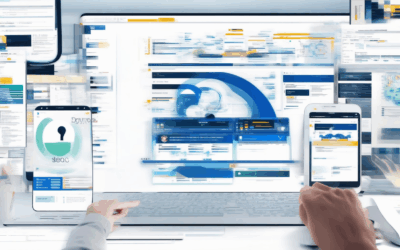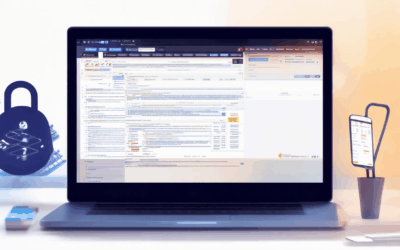In today’s interconnected world, safeguarding your digital presence has become more crucial than ever. For those embarking on their journey into internet security, navigating the vast landscape of tools and strategies can feel overwhelming. Whether you’re protecting personal data, managing sensitive information, or securing your business online, having the right internet security tools is essential. This guide offers a simple yet comprehensive overview of the top tools and practices designed specifically for beginners, helping you build a robust defense against potential threats. From understanding the basics of cybersecurity to exploring essential software solutions, this article serves as your ultimate resource for staying safe in the digital age.
Key Takeaways
- Ensure Data Protection with Confidentiality: Use strong encryption and access controls to safeguard sensitive information.
- Maintain Accuracy with Integrity: Conduct regular audits and validate data to ensure reliability.
- Keep Systems Running with Availability: Implement redundant infrastructure and disaster recovery plans.
- Manage Risks with Control: Employ a mix of technical and administrative controls to mitigate threats.
- Adhere to Regulations with Compliance: Follow standards like GDPR and HIPAA to avoid legal repercussions.
- Prevent Breaches with Deterrence: Use multi-factor authentication and secure practices to deter cyberattacks.
- Spot Threats Early with Detection: Deploy tools like IDS and firewalls for timely threat identification.
- Contain Breaches with Delay: Isolate threats and buy time to strengthen defenses.
- Strengthen Defenses: Fortify systems with robust encryption and incident response plans.
- Patch Regularly: Update software to protect against known vulnerabilities.
- Secure Accounts with Passwords: Use strong, unique passwords and enable multi-factor authentication.
- Avoid Scams with Phishing Awareness: Verify communications and educate yourself to prevent phishing attacks.
- Combine Elements for Success: Integrate people, processes, and policies for a comprehensive cybersecurity strategy.

Most Basic Cyber Defense Tool
The most basic cyber defense tool is a packet filter , which serves as the foundation of traditional firewalls. Packet filters operate by examining data packets traveling across a network and deciding whether to allow or block them based on predefined rules. This mechanism ensures that only authorized traffic passes through, acting as a barrier against unauthorized access and potential threats.
This simple yet essential tool is crucial for network protection, as it forms the basis for more complex cybersecurity measures. By monitoring and controlling data flow, packet filters help maintain the integrity and security of your systems.
Where Should a Beginner Start in Cybersecurity?
Starting your journey in cybersecurity can feel overwhelming, but breaking it down into manageable steps can make the process clearer. Here’s a structured approach to help you begin:
- Understand the Fundamentals
- Begin with networking basics, as it forms the backbone of cybersecurity.
- Learn about operating systems, particularly Linux, due to its popularity in the field and inherent security features.
- Grasp the core concepts of cybersecurity, including the types of cyber threats, vulnerabilities, and the mechanisms used to protect systems.
- Earn Initial Certifications
- Pursue foundational certifications like CompTIA Security+ to establish your baseline knowledge.
- Consider exploring entry-level certifications from reputable organizations to demonstrate your commitment to the field.
- Gain Practical Experience
- Engage in hands-on practice using tools such as Wireshark to analyze network traffic and identify potential issues.
- Utilize cybersecurity labs or online platforms to simulate real-world scenarios safely.
- Experiment with ethical hacking tools under controlled conditions to understand how attackers might exploit systems.
- Stay Updated and Educated
- Continuous learning is crucial in cybersecurity, as threats evolve rapidly. Follow industry news, blogs, and forums to stay informed.
- Enroll in advanced courses or workshops to deepen your expertise in areas like penetration testing and incident response.
- Become Part of the Community
- Join online communities such as Reddit’s cybersecurity subreddit to connect with peers and gain insights.
- Contribute to open-source projects related to cybersecurity to enhance your skills and network with contributors.
- Build a Portfolio
- Document your projects and contributions, whether through blog posts, GitHub repositories, or case studies.
- Share your findings and experiences in forums or LinkedIn to showcase your expertise to potential employers.
- Explore Career Path Options
- Research various roles in cybersecurity, such as cybersecurity analyst, penetration tester, or IT security consultant, to align your interests with a career path.
- Consider further certifications like ISC² CISSP or CEH for advanced positions.

Three Commonly Used Cybersecurity Tools
The field of cybersecurity is vast, with numerous tools available to protect systems, networks, and data. Here are three of the most commonly used cybersecurity tools:
- Encryption Tools : These tools are essential for safeguarding data through the conversion of data into a coded format that can only be read by authorized parties. Popular tools include SSL/TLS certificates, disk encryption software, and virtual private networks (VPNs) like BlindBrowser .
- Antivirus and Malware Protection : These tools scan for and remove malicious software from devices. Leading solutions include Norton Antivirus, McAfee, and Microsoft Defender.
- Intrusion Detection and Prevention Systems (IDS/IPS) : These systems monitor network traffic for suspicious activity and alert administrators to potential breaches. Tools like FireEye and Cisco Stealthwatch are widely used.
Each of these tools plays a critical role in maintaining security, whether it’s encrypting data, preventing malware infections, or detecting unauthorized access attempts. By combining these tools, organizations can significantly enhance their cybersecurity posture.

The 5 C’s of Cybersecurity
Cybersecurity is a critical aspect of modern life, and understanding its fundamental principles is essential for protecting sensitive information. Below, we explore the five key components that form the foundation of cybersecurity.
1. Confidentiality
Confidentiality ensures that sensitive information is protected from unauthorized access. This principle is crucial in industries like healthcare, finance, and government, where breaches can lead to severe consequences. By implementing strong encryption and access controls, organizations can safeguard data and maintain trust with their stakeholders.
2. Integrity
Integrity refers to the accuracy and completeness of data. It involves ensuring that data has not been altered or corrupted by unauthorized parties. Through regular audits, data validation processes, and secure storage solutions, organizations can maintain the integrity of their information systems.
3. Availability
Availability ensures that authorized users can access the information and services they need when they need them. This is achieved through robust infrastructure, redundancy, and disaster recovery plans. Without availability, businesses risk operational disruptions and financial losses.
4. Control
Control encompasses the measures taken to manage risks and ensure compliance with security policies. This includes technical controls like firewalls and antivirus software, as well as administrative controls such as employee training programs. Effective control mechanisms are essential for minimizing vulnerabilities and threats.
5. Compliance
Compliance involves adhering to established security standards and regulations, such as GDPR, HIPAA, or ISO 27001. Organizations must stay updated on these standards and implement measures to demonstrate compliance. Non-compliance can result in hefty fines and damage to an organization’s reputation.
By focusing on these five core components, organizations can build a resilient cybersecurity framework that protects against evolving threats and ensures business continuity. Remember, cybersecurity is not just about technology—it’s about people, processes, and policies working together to safeguard valuable assets.
What are the 4 D’s of Cybersecurity?
The 4 D’s of cybersecurity are a fundamental framework for understanding and mitigating threats effectively. These principles provide a structured approach to protecting systems, data, and networks from malicious actors. Here’s a breakdown of each component:
- Deter : This stage focuses on preventing unauthorized access and encouraging secure practices. Organizations often implement measures like multi-factor authentication and employee training to discourage potential attackers. By making it difficult for attackers to breach systems, organizations can significantly reduce risks.
- Detect : Detection involves monitoring for suspicious activities and responding promptly to threats. Tools like intrusion detection systems (IDS) and firewalls help identify breaches early, allowing for quicker resolution. Timely detection is crucial because delays in response can lead to larger incidents.
- Delay : Once a threat is detected, delaying the attacker’s actions can buy time to implement stronger defenses or isolate the threat. This phase is about containing the damage and reducing the window of opportunity for attackers to cause significant harm.
- Defend : Defense is the final layer, ensuring that systems can withstand attacks and recover quickly when breaches occur. This includes having robust encryption, regular software updates, and incident response plans. A strong defense minimizes the impact of any successful breaches.
By following these steps, organizations can create a layered security strategy that addresses potential threats at every stage, from prevention to recovery.

The 3 P’s of Cyber Security
The 3 P’s of cybersecurity are essential fundamentals that every individual and organization should understand and implement to safeguard their digital assets. These principles form the foundation of effective cybersecurity practices.
- Patches :
Regularly updating and patching your software, systems, and devices is crucial to protecting against known vulnerabilities. Manufacturers frequently release patches to fix security flaws that could expose your systems to attacks. Applying these patches promptly ensures that your defenses remain strong. For example, regularly updating your operating system (e.g., Windows, macOS) and installing the latest security updates are vital steps. - Passwords :
Strong password hygiene is a cornerstone of cybersecurity. Using complex combinations of letters, numbers, and symbols ensures that your accounts are less likely to be compromised. A good rule of thumb is to aim for at least 12 characters. Additionally, enabling multi-factor authentication (MFA) adds an extra layer of security beyond just a password. Avoid reusing passwords across multiple platforms to minimize the risk of widespread damage if one account is breached. - Phishing :
Recognizing and avoiding phishing attempts is one of the most critical skills in cybersecurity. Phishing occurs when attackers trick individuals into revealing sensitive information, such as passwords or credit card details, through fraudulent emails, messages, or websites. Stay vigilant and verify the authenticity of any communications before taking actions like clicking on links or sharing personal information.
By prioritizing these three pillars—patches, passwords, and phishing awareness—you can significantly reduce your risk of falling victim to cyber threats. Remember, staying informed and proactive is your best defense against evolving cyber dangers.




